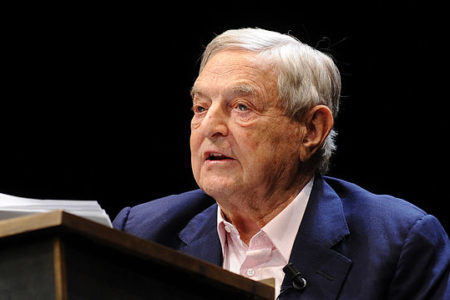 Near the end of The Year of Our Lord 1943, his wondrous tapestry of Jacques Maritain, T. S. Eliot, C. S. Lewis, W. H. Auden, and Simone Weil, Alan Jacobs quotes an extended passage from Eliot written during World War II. Eliot opines that Europe’s declining cultural health was rooted in the pressures of modern industrialism, a system by which “we become mechanized in mind, and consequently attempt to provide solutions in terms of engineering, for problems which are essentially problems of life.”
Near the end of The Year of Our Lord 1943, his wondrous tapestry of Jacques Maritain, T. S. Eliot, C. S. Lewis, W. H. Auden, and Simone Weil, Alan Jacobs quotes an extended passage from Eliot written during World War II. Eliot opines that Europe’s declining cultural health was rooted in the pressures of modern industrialism, a system by which “we become mechanized in mind, and consequently attempt to provide solutions in terms of engineering, for problems which are essentially problems of life.”
Jacobs walks us through the interwoven paths by which Maritain, Eliot, Lewis, Auden, and Weil find an alternative solution to the problems of life—a call for a renewed Christian humanism. The questions they raise in 1943 are critical. What does an education in the humanities have to contribute to our technocratic world? Does a Christian approach to the humanities, in particular, have anything to add? If so, what is the best mechanism for making a societal transformation?
Eliot’s quote, while reflective of the time to which he bore witness, is eerily applicable to our own age. We tend to crave technological solutions to the problems of life.
Jacobs’s book opens in November 1939 with Auden watching a movie in a German neighborhood in the upper east side of Manhattan. Upon seeing images of Polish prisoners of the Wehrmacht on screen, he hears his fellow patrons cry out: “Kill them!” Shocked by their response, Auden is left wondering whether he has the “grounds to demand, or even a reason to expect, a more ‘humanistic’ response.” It’s a moment that catalyzes Auden’s journey back to the Christian faith as he searches for just such a moral foundation.
As Jacobs shows, this concern was not limited to Auden. Weil, for example, worried whether the modern discourse on human rights lacked power in the absence of logical justification. Eliot, Lewis, and Maritain shared this same concern, expressed in different ways.
Jacobs’s biographical method is, in many ways, the star of the show. Letting his characters’ voices weave themselves together, Jacobs aptly pulls them into common points of reflection. In doing so, he identifies ways in which their idiosyncrasies illuminate the concept of Christian humanism. In one chapter, for example, Jacobs highlights the divergence between how Maritain and Lewis saw technology, the former seeing it as an explicit philosophy and the latter arguing that it “functions most powerfully when it operates in a subterranean mode.” At another point, Jacobs contrasts Weil’s love for and commitment to the outsider—a view that kept her outside the church—with Lewis’s decision to exist very much inside the establishment, whether in his university position or his comfortable relationship to orthodoxy. Jacobs lets these multiple (and often inconsistent) views intertwine in ways that force the reader to wrestle with how to integrate them.
What unites these thinkers is a burning desire to build an alternative to the demonic powers made manifest within the war and to house that vision within the university. The protagonists of 1943 worried that a technocratic ideology fails to see individuals as moral persons whose vocation extends far beyond that of a citizen or worker. In his Terry Lectures, Maritain offered one of the most direct explanations of the alternative model, arguing that “the prime goal of education is the conquest of internal and spiritual freedom to be achieved by the individual person, or, in other words, his liberation through knowledge and wisdom, goodwill, and love.”
For these individuals, even the secular humanist project had its problems. Though also suspicious of technocracy, secular humanism too easily elevated the human to an almost cult-like status. A Christian humanism must decenter this anthropocentric model with an equally deep understanding of human evil.
Jacobs’s narrative is not one of social change. However ambitious, each of these reformers moved away from institutional reform. Lewis, after a time, migrated into fiction. Auden and Eliot renewed their focus on poetry. Only Maritain ended the war in something close to a political posture, working to build his personalist views into laws and institutions. Jacobs concludes:
Their diagnostic powers were great indeed: they saw with uncanny clarity and exposed with incisive intelligence the means by which technocracy has arisen and the damage it had inflicted and would continue to inflict, on human persons. Few subsequent critiques of “the technological society” rival theirs in imagination or moral seriousness. But their prescriptions were never implemented, and could never have been: they came perhaps a century too late, after the reign of technocracy had become so complete that none can force the end of it while this world lasts.
Jacobs left me wondering whether a successful transformation of an educational model could ever be enough. Does a different higher educational vision have the power to alter the broader cultural and institutional landscape? As an educator, I enter each semester with the hope that the classroom can reform desires. But I am also a scholar of organizations and markets. I know that our systems of incentives and temples of market formation are robust and resistant to change. Had Mark Zuckerberg or Sheryl Sandberg been educated in institutions built upon Christian humanism or forged within a Thomistic university, I doubt that Facebook would have made different strategic choices.
In a recent blog post, Jacobs reflects on his experiences teaching technological and media literacy to freshmen in Baylor’s honors program. Despite finding the material compelling, many students acknowledge that they are unlikely to change their behavior. He reflects their voice perhaps in saying there “just aren’t (enough hours) left over for questioning the moral legitimacy of Instagram.” The title of Jacobs’s post? “Maybe it’s time to give up.” It seems that the protagonists of 1943 ended in a similar posture.
Jacobs is right to point out that a technocratic worldview is powerful in its appeal to scientific objectivity. It is “a gospel that liberals and conservatives alike are drawn to.” The problem is unlikely to shrink in importance anytime soon. Whether in the “ranches of isolation” or “the valley of making,” to use Auden’s language, we are in need of re-enchantment. Jacobs’s protagonists remind us that our savior might not come in technocratic packaging and might instead exist woven into the theologically informed poetry that “makes nothing happen.” Perhaps all we can do is to live transformed by this power within the fields we plow, acting expansively as we pray for a thousand flowers blooming.






Recent Comments